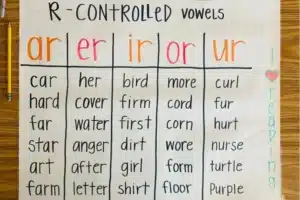
Children exhibiting symptoms of High-functioning Autism Spectrum Disorder (ASD) may go undetected, even though they are verbal and exhibit average or above average intelligence because, they still have their own challenges. Signs of High Functioning ASD include social interaction difficulties, limited capacity to understand social cues, and making and keeping friends issues.
Children might also show repetitive behaviours, deep focus on specific topics and strong reactions to sensual experiences. Distinguishing these High Functioning ASD Symptoms early can help provide the right support for a child’s growth and development.
Signs and Symptoms of High Functioning Autism
High-functioning Autism (HFA) means that the individual is on the autism spectrum and has average or above-average intelligence and developed language skills. An HFA individual has developmental delays in the sense that they do not show age-appropriate delays in learning; rather they display predictable behaviors that come from a different learning style that is more prevalent among individuals with autism.
To download the brochure of the SEN Course, Click Here!
For more details on the SEN Course Call/Whatsapp at +919321024137 / +919869866277
Social Interaction Issues
- Due to inability to interpret facial expressions and cues individuals with high functioning autism prefer to refrain from forming any friendships.
- Verbal Communication Struggles: Meagrely developed communication skills lead to conversations that are one-sided and issues with understanding the other person’s tone and gestures.
- Actual Understanding: Poor interpretation skills limits the child’s ability to understand sarcasm that might lead to unfriendly behaviour.
Repeating the same action
- High functioning autistic individuals have a trait of performing a particular action repeatedly.
- Such Movements like hand-flapping, rocking, or repeating words or routines.
- Struggle to adapt to change: Issues to adapt to any changes in their daily schedule due to any unforeseen events.
Sensory Issues
- High functioning Autism Individuals may react differently to atmospheres that are high in
- sounds, lights, or textures; or little reaction to pain and temperature.
Additional Characteristics
- Emotional Adjusting Issues: Inability to understand their emotions and dealing with them when they act as trigger points for emotional melt-downs.
- Organisational skills: As the skills needed for organising things, managing time are poorly formed they struggle with managing their daily tasks.
- Unique Thinking Patterns: Strong memory or focus on detail, but challenges in understanding social situations.
Noticing these important signs can be huge breakthrough for caregivers, educators and parents to provide the child the much-needed appropriate support enabling them to embark on a successful journey of handling their lives efficiently.
To download the brochure of the SEN Course, Click Here!
For more details on the SEN Course Call/Whatsapp at +919321024137 / +919869866277

How to Test for High-Functioning Autism?
High-Functioning Autism cannot be diagnosed by a set defined test. The whole process is a systematic breakup of a series of evaluations by trained professionals who understand various domains of the child such as behavior, development, and communication patterns.
The Testing Process:
Screening Tools:
The first step in the testing process begins with a checklist such as an Autism Spectrum Screening Questionnaire (ASSQ) to notice the small signs. This helps to initiate the next steps.
Comprehensive Evaluation:
- Clinical Interviews: A database is formed by collecting information from parents and caregivers to understand about aspects of social interactions, communication, and repetitive behaviors.
- Inspection: The concerned professional does a thorough observation of the individual to gain a proper understanding of behaviour and responses.
Standardized Tests:
- ADOS: Assesses social and communication skills.
- Intellectual assessments: Identifying their rational judgemental patterns and areas that require aid.
- Adaptive Functioning: This helps to judge the child’s daily functioning skills and adaptability capabilities.
- Inter-disciplinary Guidance: A team of professionals such as psychologists, neurologists, and speech-language pathologists are involved in the process of interventions.
- Diagnostic Criteria: There is a set DSM-5 criteria for understanding the results whether they match with the standards for autism spectrum disorder. Only when there is substantial evidence of social communication issues and signs of repetitive behaviours can lead to a diagnosis of high functioning autism disorder.
- Early diagnosis ensures children get the help they need at the right time.

Source: tasteforlife
The Difference between Asperger’s and HFA
Asperger’s Syndrome and High-Functioning Autism (HFA) were once considered distinct diagnoses. The key difference lay in early language development. While both conditions fall under the autism spectrum and share similar traits, children with HFA often experienced early language delays, whereas those with Asperger’s typically did not.
Asperger’s Syndrome (Historically)
- Language Development: No significant delays in early speech and language milestones.
- Social Struggles: Inability to understand facial expressions and keeping consistent eye-contact.
- Limited Interest: Excess interest in only certain topics and too much resistance to include any change in their routine.
- Cognitive Skills: Often average to above-average intelligence.
- Coordination and Fine Motor Skills: More chances of coordination issues and managing issues.
High-Functioning Autism (Historically)
- Language Development: Occurrence of language difficulties at an early stage.
- Social Challenges: Similar to Asperger’s, including trouble with interactions and interpreting social behavior.
- Repetitive Behaviors: Narrow interests and repeated actions or routines.
- Cognitive Skills: Average to above-average intelligence.
- Gross and Fine Motor Skills: Typically fewer issues with coordination compared to Asperger’s.
Current Understanding (DSM-5)
- Unified Diagnosis: Both are now classified under Autism Spectrum Disorder (ASD).
- Support Levels: ASD is categorized into levels 1, 2, and 3 based on support needs.
- Individualized Focus: The focus is now on the individual strengths and challenges of each person, rather than diagnostic labels.
These days, identifying Asperger’s versus HFA is less important, because the emphasis is on putting the right kind of personalized support in place (within the spectrum of autism).
To download the brochure of the SEN Course, Click Here!
For more details on the SEN Course Call/Whatsapp at +919321024137 / +919869866277

School, Jobs and Autism
Individuals who are on the autism spectrum must deal with varied challenges in schools and their jobs but with consistent support and appropriate treatments they can be easily accommodated into any regular classroom setup. Making a proper list of the child’s strengths and a keen understanding of their needs is the first defining step in addressing the challenges of the child.
In Schools:
- Students with autism may benefit from routines, explicit details, and sensory friendly environments.
- Students with autism may have difficulties with social interaction so support in communication and interaction is helpful.
- Trained teachers with knowledge of inclusive teaching strategies be helpful for the student with autism to have a positive learning experience.
- The Special Education Needs Course by Vidhyanidhi Education Society prepares educators to support these learners effectively.
In the Workplace:
- As individuals with autism are gifted with artistic skills they can excel in areas of reliability, and pattern recognition.
- Being eloquent and giving concise instructions can help them perform well.
- Employers who value neurodiversity benefit from the unique skills autistic individuals bring.
Being educated professionals through the Special Education Needs Course is essential for nothing less than valuable support for children and adults on the spectrum at every phase, whether that means supporting students with adapting to a routine in the classroom or assisting with job placements. It is the Special Education Needs course that completes a supportive provision for promoting inclusion and providing a lasting positive impact.
Ready to make a difference? Join Vidhyanidhi Education Society’s SEN Course and boost your career!
To download the brochure of the SEN Course, Click Here!
For more details on the SEN Course Call/Whatsapp at +919321024137 / +919869866277
FAQs
What Age Does High-Functioning Autism Show?
Early differences may appear by 12–18 months, such as limited eye contact or delayed gestures. Most professionals can confirm high-functioning autism by ages 2–3.
What Are Some Clear Signs of High-Functioning Autism in Children?
Watch for: single topic focus, literal speech, difficulty understanding emotion, sensory sensitivities, mode of habitual routines; the reason Vidhyanidhi Education Society trains teachers to find this.
Do Vaccines Cause Autism?
Science says that their Vaccines do not cause Autism as after repeated research findings no relationship between immunization and vaccines is established.



